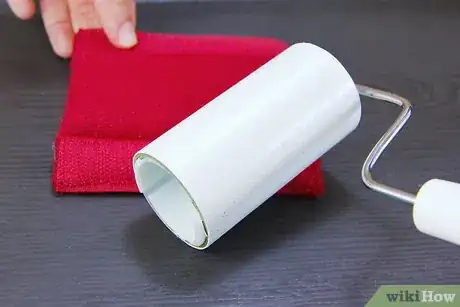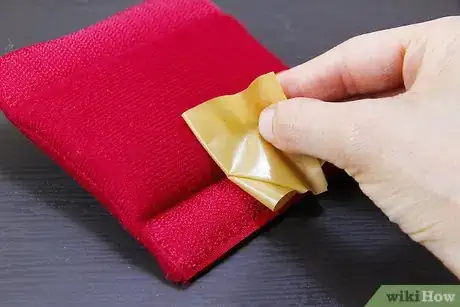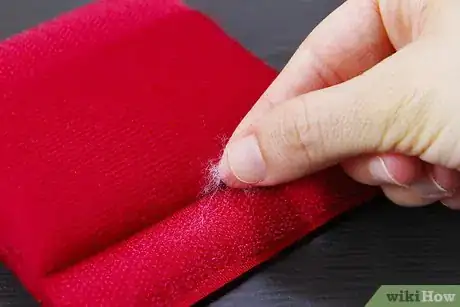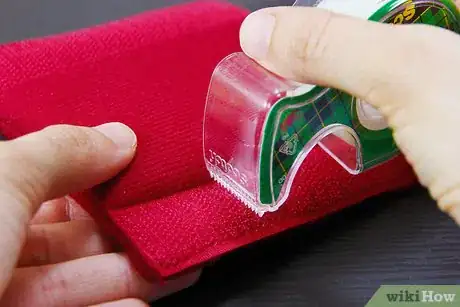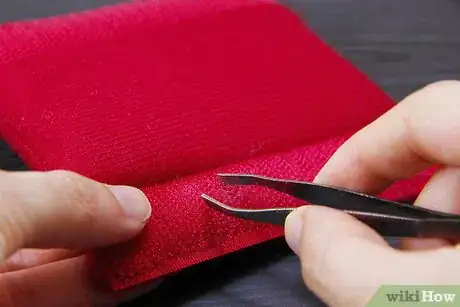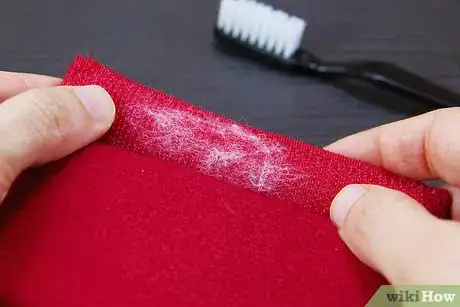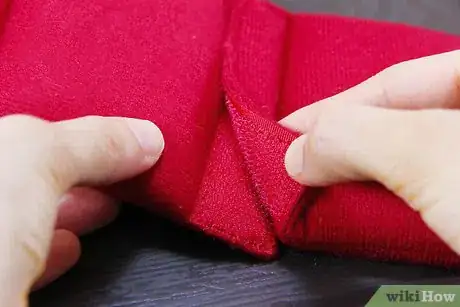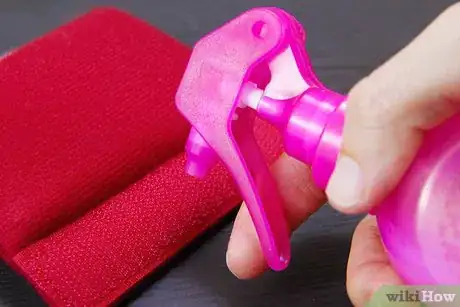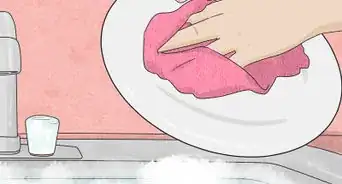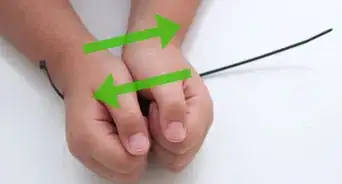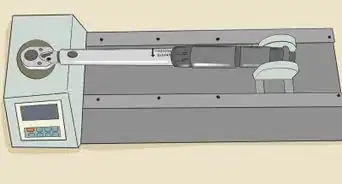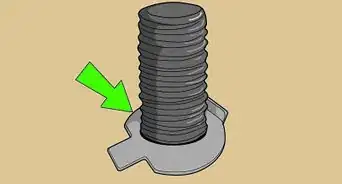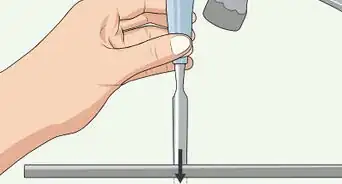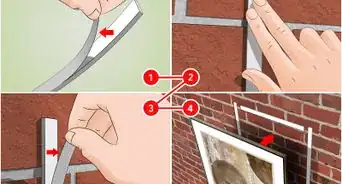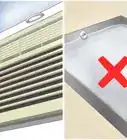This article was co-authored by James Sears. James Sears leads the customer happiness team at Neatly, a group of cleaning gurus based in Los Angeles and Orange County, California. James is an expert in all things clean and provides transformative experiences by reducing clutter and renewing your home environment. James is a current Trustee Scholar at the University of Southern California.
wikiHow marks an article as reader-approved once it receives enough positive feedback. This article received 20 testimonials and 91% of readers who voted found it helpful, earning it our reader-approved status.
This article has been viewed 558,002 times.
Hook-and-loop fasteners, such as the Velcro® brand fasteners, are a breeze to use but can be difficult to keep clean. Clothing fuzz, pet hair and other lint can get embedded in the hook side of the closure, diminishing its ability to close. By removing surface fuzz, picking out embedded lint and performing hook-and-loop fastener maintenance, you can keep your closures clean and working well.
Steps
Removing Surface Lint
-
1Roll the hook-and-loop fastener with a lint roller. To remove surface debris, use a lint roller that you’d normally use on your clothes to roll the fastener. Lay the fastener flat, and hold at one end, rolling over it a few times with the lint brush. Refresh to a new sticky “sheet” of the lint roller as necessary.[1]
-
2Press the hook-and-loop fastener with duct tape. Cut a piece of duct tape no bigger than your palm, so it doesn’t get unwieldy and stick to itself. Lay the fastener flat, and press the tape into the closure to get it to adhere to as much lint as possible. Holding the fastener firmly at one end, strip the tape away to remove the lint.[2]
- You can perform this step several times with new pieces of duct tape, as necessary.
Advertisement -
3Use your fingernails to scrape the hook-and-loop fastener. Your fingers can be a useful tool to remove any surface lint from the fastener. Lay the fastener flat, and pick off any obvious pieces of thread or hair that may have ends you can grab sticking over the edge. Then, give the fastener a good scrape with your fingernails to remove as much surface lint as you can.
Removing Embedded Lint
-
1Use a stiff toothbrush to brush the hook-and-loop fastener. Use a stiff, plain toothbrush (preferably just bristles no gum massagers or other plastic parts) to brush trapped lint out of the fastener. Lay the fastener flat, and apply pressure in short, hard strokes with the bristles from one end of the fastener to the other.[3]
- Pick any lint that comes to the top of the fastener out with your fingers.
-
2Scrape the hook-and-loop fastener with the cutter of a tape dispenser. Use the edge of the tape dispenser that you'd normally use to cut the tape to scrape the fastener clean. Lay the fastener flat, and use the teeth of the tape dispenser to rake it in short firm strokes from one end to the other.[4]
- Pick any lint that comes to the top of the fastener out with your fingers.
-
3Pick any deep lint out with needle-nose tweezers. For lint that is deeply embedded in the hooks of the fastener, use a pair of needle-nose tweezers to pick it out. Lay the fastener flat, holding at both ends. Then, use the tips of the tweezers to tease out the debris.[5]
Maintaining a Clean Fastener
-
1Brush lint out of the hook-and-loop fastener once a month. To keep the fastener closing well and lint-free, clean it once a month. Doing this will keep debris from getting excessively embedded, which is more difficult to remove than surface lint.[6]
-
2Fasten the hook-and-loop fastener together before placing it in the washer. If the fastener is on an item you wash in the washing machine, fasten the hook and loop sides together before washing the item. This will keep the closure from picking up stray threads or damaging your other clothes in the washing process.[7]EXPERT TIPJames Sears leads the customer happiness team at Neatly, a group of cleaning gurus based in Los Angeles and Orange County, California. James is an expert in all things clean and provides transformative experiences by reducing clutter and renewing your home environment. James is a current Trustee Scholar at the University of Southern California.Professional Cleaner

 James Sears
James Sears
Professional CleanerOur Expert Agrees: You can clean most Velcro items in your washing machine, but be sure to fasten the Velcro together to prevent the collection of more debris, hair, and lint. Also, if the Velcro is glued to the item, rather than stitched or sewn in place, you may want to avoid machine drying, or at least dry it on low heat. Drying the object on high heat can cause the glue to melt or wear off over time.
-
3Spray the hook-and-loop fastener with anti-static spray after washing. Anti-static spray, such as Static Guard, can make the fastener attract less lint. Spray the fastener after you wash your clothes, to minimize debris.
Community Q&A
-
QuestionCan I iron Velcro?
 Community AnswerYes, and no. You have to buy the iron on kind of Velcro. You cannot iron the sticky kind. It should specifically state on the package what kind it is.
Community AnswerYes, and no. You have to buy the iron on kind of Velcro. You cannot iron the sticky kind. It should specifically state on the package what kind it is. -
QuestionWhere can I buy the spray anti-static spray?
 Community AnswerLook up Static Guard and you can order it online or buy it in places Walmart. There might be other brands, but this is a common one.
Community AnswerLook up Static Guard and you can order it online or buy it in places Walmart. There might be other brands, but this is a common one. -
QuestionWhere can I buy the brush to clean Velcro?
 Community AnswerYou can use any hard-bristled toothbrush. You can find them at your local pharmacy or a dollar store. They might be a little hard to find because most dentists recommend soft-bristled toothbrushes.
Community AnswerYou can use any hard-bristled toothbrush. You can find them at your local pharmacy or a dollar store. They might be a little hard to find because most dentists recommend soft-bristled toothbrushes.
References
- ↑ https://startsat60.com/lifestyle/how-to-remove-lint-from-your-clothes-without-a-lint-roller
- ↑ https://www.reference.com/home-garden/clean-velcro-lint-4eb00f902ad138eb
- ↑ James Sears. Professional Cleaner. Expert Interview. 28 August 2019.
- ↑ https://www.youtube.com/watch?v=ymrTyEk7UiU
- ↑ https://www.trails.com/how_1049_clean-velcro.html
- ↑ James Sears. Professional Cleaner. Expert Interview. 28 August 2019.
- ↑ https://www.velcro.com/business/customer-service/product-care
About This Article
If you need to clean velcro, roll a lint roller across the surface of the hook-and-loop fastener to remove surface lint. If you don’t have a lint roller, press a piece of duct tape over the velcro instead. If the lint is embedded, brush the velcro with a stiff-bristle toothbrush or pick the lint out of the fastener with a pair of tweezers. To learn how anti-static spray can help keep lint from getting trapped in the velcro, keep reading!
